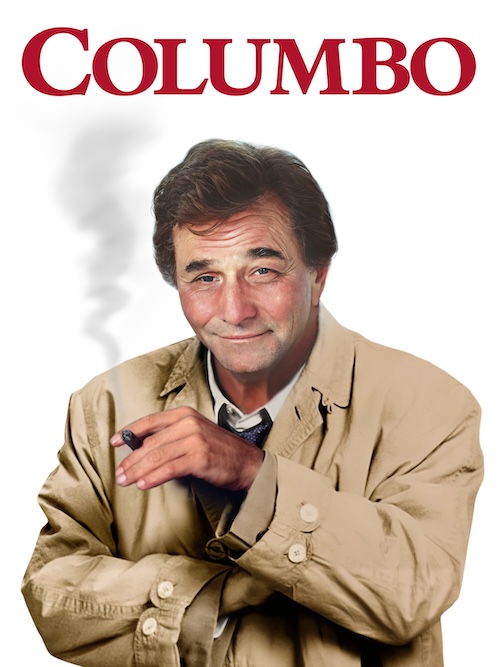
Over the course of its early seasons, American crime drama TV series “Columbo” emphasizes the titular character’s unusual relationship with the outside world. He is technically a police lieutenant, but he doesn’t carry a gun, and you don’t see him at the office. He doesn’t even like identifying himself, and will only do it when he has to.
“We wanted to keep [Columbo] almost mythological,” show co-creator William Link said. “He comes from nowhere and goes back into nowhere.”
The lieutenant solely attacks murderers (at a rate of one per episode) hidden among Los Angeles’s wealthy elite. These (often first-time) murderers are generally superbly intelligent and can deftly navigate their way through their bubbled societies. Surprisingly, they can even occasionally be sensitive and vaguely compassionate. However, among the other negative personality traits it demonstrates, their murders reveal their extreme condescension towards others—after all, the murderers are saying that their wants at that particular moment are worth more than somebody else’s life. This condescension allows for them to miss Columbo, the “detective” who never commands authority and is mistaken for random workers, every time.
“You know Columbo, you’re almost like a bull in a shabby sort of way,” the murderer of the week says at the end of the second pilot episode. “Maybe it’s the way you come slouching in here with your shopworn bag of tricks…. The humility, the seeming absentmindedness, the homey anecdotes about the family, the wife, you know?…. Lieutenant Columbo fumbling and stumbling along but it’s always the jugular that he’s after. And I imagine more often than not that he’s successful.”
It’s a lovely speech. No doubt about it. However, with their hubris, they got this wrong—he’s not a bull.
Bulls pick the first target they see and just charge at them. However, going for the first target is not the lieutenant’s style. He’s really more of a bee: he knows he is only going to get one sting, so he slowly circulates around the room, waiting until he picks up the scent of potential guilt. Once he does, he is quick to buzz around and annoy the person who he wants to use his sting on.
In a traditional murder mystery, when you learn who the murderer is, you simply are either surprised or you aren’t. All of the suspense that is built up abruptly fades. “Columbo” is significantly more satisfying. While the viewer watches the murder happen, Columbo obviously has to find the criminal for himself. There is a special pleasure in watching the lieutenant discover all the clues and triumph over crime in the end. If you want to see justice done, then you can just sit down and watch every episode of “Columbo” and be satisfied.
I have a different suggestion.
With an anthology series, there is no pressure to start at the beginning. For “Columbo,” it’s a bit more complicated, as it has two pilots episodes. Some websites, organizations, and people count the first pilot as the first episode and the second pilot as the second episode, others count the second pilot as the first episode, and Google at least just counts the third episode (or their first non-pilot) as the first “Columbo” episode. These pilots mean that you can’t trust episode numbers from the first season. If someone says “the third episode of ‘Columbo,’” the only appropriate answer to give is “What?”
Both pilots are an hour and 35 minutes long whereas every other episode from the first season is an hour and 15. Trust me—stick with the hour and 15-minute ones. The first pilot is called “Prescription: Murder” and the second is called “Ransom for a Dead Man.” Both are very good but a bit slower than the average “Columbo” episode. If you watch either of these first, you could come away with the mistaken notion that “Columbo” is a little boring—which it certainly isn’t.
In these first episodes, Peter Falk, the actor who plays Columbo, hasn’t quite hit his stride yet—he doesn’t have his signature catchphrases and demeanor down the way he does in later episodes. Falk is still incredible but just not as otherworldly as he becomes. “Prescription: Murder” shows a much more emotional Columbo and thus a much less fun one. In later episodes, he is much more calm, calculating and smart. He never gives away his hand. Lee Grant is incredible, though, as the murderer in the second “Columbo” pilot. The directing is also really nice, and creative flairs bring the second pilot to light and make it more enjoyable than the first pilot.
The first non-pilot is called “Murder by the Book.” Steven Spielberg does an incredible job as its director. It isn’t a hot take to say that it is the best directed episode of “Columbo.” Spielberg was only 24 at the time, but it is clear that he deserved to go someplace bigger than TV. “Murder by the Book” is also very, very well-written. The characters are deeply drawn and each little moment has a decent amount of humanity in it. Nothing is missed. Every pause is crucial.
Although it is only the third episode, Falk fully becomes Lieutenant Columbo. Never again will anything go wrong on that front. However, and this is key, the ending falls just a little flat. This is why I recommend you start with season one’s next episode “Death Lends a Hand.” It is absolutely perfect—it moves quickly and holds all the hallmarks of a great “Columbo” episode: an incredibly calculating villain, a sympathetic victim, and Columbo’s genius is on full display. This excellence of this episode is bitterly contrasted by the next, “Dead Weight,” which is maybe the worst of the season. The murder is unclear, and the pieces never fall into place.
The following episode “Suitable for Framing” is solidly okay with a great ending but is certainly more than a bit boring. Overall, it’s very skippable. The next episode, “Lady in Waiting,” is genuinely incredible. The murderer is so incredible and her family drama is so understandable that you sort of fall in love with her. The episode itself also perfectly displays 1970s Los Angeles in all of its glory. After that, there’s just “Short Fuse” and “Blueprint for Murder.” Skip both. That’s all that needs to be said.
In summary, watch “Death Lends a Hand,” then “Lady in Waiting,” and then “Murder by the Book.” After those three episodes, I recommend that you should go right onto season two and thus the episode “Requiem for a Star,” which is one of the greatest “Columbo” episodes, and even episodes of television, ever.
I know that it’s odd to praise what really is a great season of TV and then recommend that you skip two thirds of the episodes, but I truly believe that in an anthology TV series, you should start with the best of the best and then go down from there. The episodes I recommended are literally the best of the best and certainly not worth missing.
Henry Kaplan can be reached at hrkaplan@wesleyan.edu.



Leave a Reply